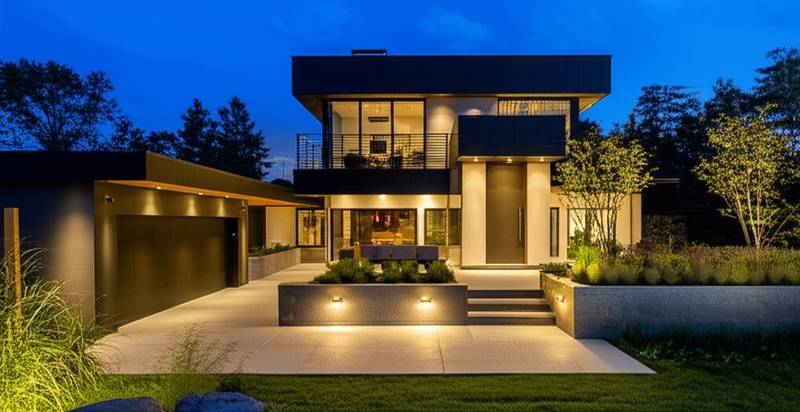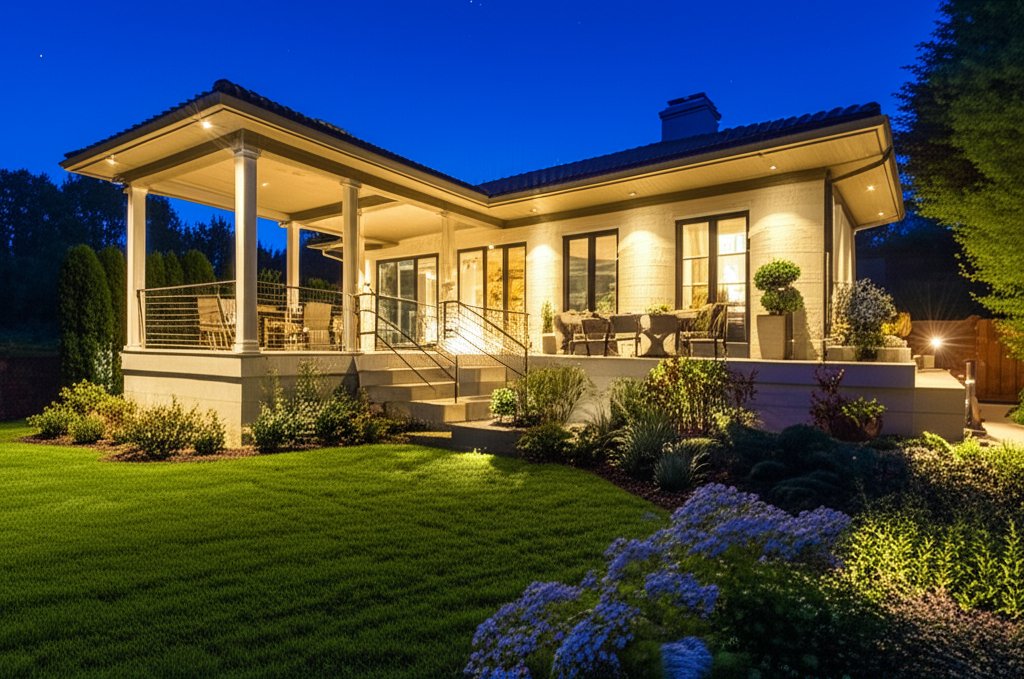Illuminate Outdoor Spaces Thoughtfully Without Light Pollution
Effective outdoor lighting enhances the landscape without drawing attention to itself. It highlights the gentle curve of a path, the texture of stone walls, or the subtle movement of leaves in the evening breeze. However, excessive brightness often spills beyond intended areas, washing out the stars and disrupting the serene atmosphere. Achieving balance requires intentional design that respects both the environment and the natural night.
The Impact of Light Pollution in Residential Settings
Light pollution extends beyond urban environments into suburban yards and gardens. When fixtures direct light upward or outward, it creates sky glow that obscures constellations and interferes with natural cycles. This phenomenon disorients nocturnal wildlife, such as birds during migration and insects essential to pollination. For humans, it diminishes the restorative quality of darkness, leading to a less peaceful outdoor experience.
The key lies in purposeful illumination that supports evening activities like safe navigation or relaxed gatherings. Dark sky lighting directs light precisely to surfaces, preventing waste and preserving the night's inherent tranquility. This method aligns outdoor design with environmental stewardship.
Core Principles of Dark Sky Lighting
Dark sky lighting relies on foundational practices that promote efficiency and harmony:
- Direct light downward exclusively. Select fixtures with full shielding to contain light on paths, plants, or structures, eliminating upward spill and reducing glare.
- Apply minimal necessary brightness. Assess the space to determine required lumens; lower outputs preserve shadows and depth, enhancing visual interest.
- Opt for warm color temperatures. Bulbs in the 2700K to 3000K range emit soft, amber hues that complement natural elements and lessen wildlife disturbance, unlike cooler tones that appear stark.
- Incorporate automated controls. Install motion sensors, timers, or dusk-to-dawn switches to activate lights only during use, conserving energy and maintaining dark periods.
These guidelines transform lighting from mere functionality into an integrated aspect of landscape architecture.
Viewing Your Landscape Through a Nocturnal Lens
Adopting dark sky principles reshapes how one perceives outdoor areas at night. Human eyes adapt quickly to low light, allowing subtle fixtures to delineate spaces effectively. Mimic moonlight by grazing surfaces with indirect beams, which emphasize textures and foster intriguing shadows.
For instance, position lights to outline a winding garden path, creating an alluring progression rather than uniform illumination. Uplighting a tree trunk from ground level can sculpt its form dramatically, provided the beam remains narrow and shielded. The objective is subtle guidance that invites exploration without overwhelming the senses.
Selecting Appropriate Fixtures
Fixture choice determines light control and aesthetic integration. Prioritize models with opaque tops and no visible light sources from horizontal views to ensure downward focus. Consider these options for various applications:
- Pathway markers: Low-profile bollards with hooded lenses that illuminate steps or borders without casting broad beams.
- Wall-mounted lanterns: Sconces designed to wash light vertically onto facades or downward along entrances, avoiding horizontal projection.
- Integrated step illuminators: Recessed units embedded in stairs or decks that provide safety through focused, low-level glow.
- Submersible uplights: Ground-flush installations that accentuate vertical elements like foliage or sculptures with precise, contained upward light.
Steer clear of broad floodlights unless equipped with adjustable shields and narrow apertures. Test placements to confirm light stays within property boundaries.
Selecting Optimal Bulbs
Bulb selection influences light quality, longevity, and ecological impact. Warm white LEDs, mimicking incandescent warmth at 2500K to 3000K, foster a welcoming ambiance and integrate seamlessly with greenery. Aim for outputs between 200 and 800 lumens per fixture, depending on the area's scale, to avoid over-illumination.
LEDs offer superior durability and energy savings, but pair them with compatible shielded housings for maximum benefit. Regularly inspect bulbs for degradation, as dimming over time can alter intended effects. This combination yields efficient, visually pleasing results.
Planning Lighting with Intention and Moderation
Approach outdoor lighting design as a narrative of light and shadow interplay. Identify key elements, such as entry points or focal plants, and layer illumination accordingly to build spatial rhythm. Begin with a single zone, like a patio or walkway, to evaluate interactions with surrounding features.
Refine by tweaking height, angle, or wattage until harmony emerges, then replicate successful patterns elsewhere. Key considerations include:
- Highlight inherent forms. Direct beams to underscore tree canopies, rock formations, or water edges, allowing shapes to emerge naturally.
- Embrace unlit zones. Darkness in peripheral areas provides contrast, enhancing the perceived depth and serenity of illuminated sections.
- Account for reflective surfaces. Position lights to leverage ponds, polished stones, or white mulch for amplified yet controlled radiance.
This methodical process ensures cohesive, impactful results.
Fostering Evening Connections Under the Stars
Outdoor evenings hold profound appeal for social and reflective moments. Subtle lighting around a fire feature or seating area encourages lingering without harsh interruptions. Dark sky methods restore the layered experience of proximate warmth paired with celestial vastness.
Such designs reconnect users with natural darkness, promoting relaxation and wonder. The result is an environment where landscape details and overhead stars coexist harmoniously.
Implementation Options: DIY or Professional Guidance
Low-voltage systems suit hands-on projects, offering plug-and-play installation for paths or accents. These allow experimentation with layouts before committing to wiring. For intricate setups or ecologically sensitive sites, engage a landscape lighting specialist to optimize placement and compliance.
Professionals ensure code adherence and integration with irrigation or hardscaping. Regardless of approach, prioritize testing during twilight to fine-tune visibility.
Integrating Lighting into Everyday Outdoor Life
Seamless lighting blends into the landscape, enhancing usability without prominence. It subtly elevates moods during routines like evening strolls or al fresco meals. Over time, this fosters a deeper appreciation for the night's nuances.
Embrace incremental adjustments, such as retrofitting existing fixtures with shields or timers. Each step contributes to a more balanced, enriching outdoor realm that honors both beauty and the broader ecosystem.



